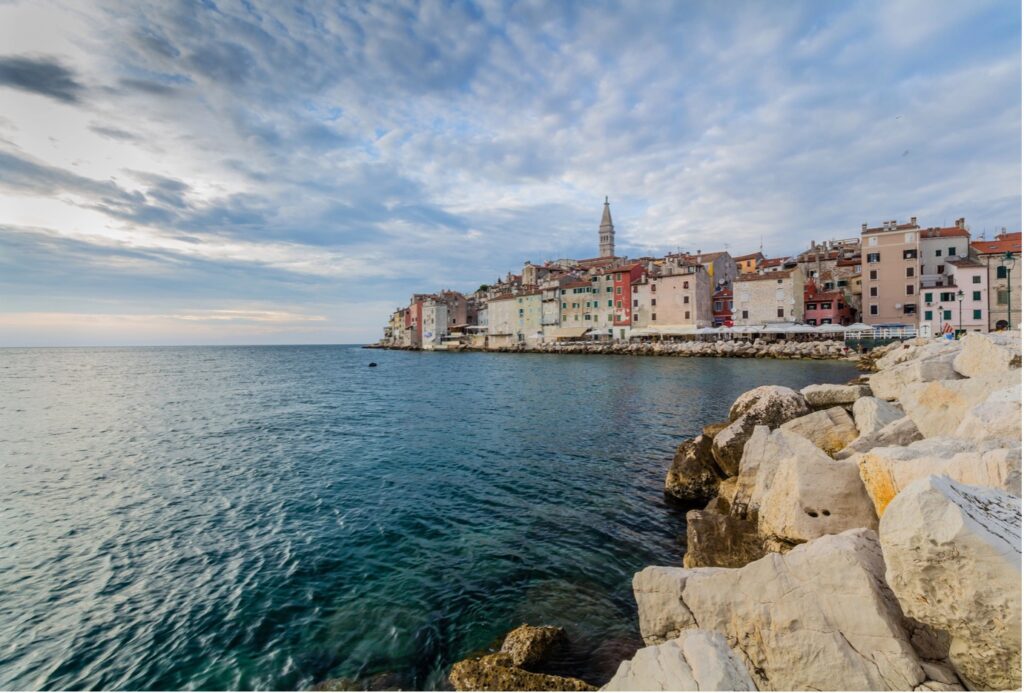There’s a word that drifts softly on the Adriatic breeze: Pomalo.
In Croatia, it means “take it easy,” but it’s more than just a phrase. It’s a way of life, a tempo, a nervous system in harmony. It encourages you to do things slowly, gently, and with ease, to savour life rather than rush through it.
After travelling through the sun-kissed coastal towns of Opatija, Dubrovnik, and Zadar, I started to feel that Pomalo is not just something you do, but something you become. It’s in the way locals sip coffee for hours, in the gentle hum of conversations by the sea, in the relaxed pace of small daily rituals that remind the body it is safe to rest. In a world obsessed with speed, Pomalo feels like a quiet rebellion.
Pomalo and the Slow Living Movement
The Western slow living movement promotes similar values: presence, simplicity, and intentionality, but Pomalo offers a certain soulful ease. It doesn’t demand a complete lifestyle change or a retreat in the mountains. It’s a moment-to-moment decision to be here, to let go of urgency, and to breathe into being.
Slow living in modern psychology often focuses on minimalism and mindfulness, slowing down to prioritise meaning over material. Pomalo, however, feels communal and embodied. It’s not only about slowing your pace but about aligning with the natural tempo of life itself.
While slow living might ask, “How can I simplify my schedule?”, Pomalo asks, “Can I soften my way of being?”
It’s not about doing less; it’s about doing what matters, with presence.
The Neuroscience of Slowing Down
Our brains aren’t built for constant movement. When we move too quickly, multitask, or scroll endlessly, the amygdala, the brain’s alarm centre, fires repeatedly, signalling danger. Cortisol levels increase, and our nervous system enters a subtle fight-or-flight mode. Over time, this constant activation drains energy, dulls creativity, and reduces our ability to experience joy.
Slowing down, by contrast, activates the parasympathetic nervous system, our body’s natural brake. The vagus nerve, which runs from the brainstem through the heart and gut, signals safety when we breathe deeply, linger in conversation, or watch the sunset. This is not laziness; it’s neurobiological restoration.
Research from Harvard’s Benson-Henry Institute shows that relaxation practices, breathwork, mindfulness, and gentle movement influence gene expression related to inflammation and stress. In other words, calmness affects us at a cellular level.
When you live Pomalo, your nervous system exhales.
Pomalo as Self-Care for the Modern Mind
We often see self-care as adding something, like a yoga class, a skincare ritual, or a gratitude list. But Pomalo presents self-care as subtraction. It’s about letting go of the unnecessary pressure to always optimise, achieve, or prove.
In Croatian rhythm, there’s no rush to fill silence. Coffee breaks are long not because there’s nothing to do, but because being together is something to enjoy. Self-care shifts from strict scheduling to simply surrendering to the moment.
Neuroscientist and mindfulness researcher Dr Richard Davidson explains well-being as a skill that can be developed, fostering attention, compassion, resilience, and purpose. Pomalo gently enhances all four. When we slow down enough to notice the texture of the moment, oxytocin increases, cortisol decreases, and the mind shifts from scarcity (“I don’t have time”) to sufficiency (“this is enough”).
Embodied Presence: Lessons from the Adriatic
In Dubrovnik, I watched an elderly couple sitting quietly by the port, sharing figs and laughter. They weren’t scrolling or checking the time. They were being. The sunlight danced on the water, the world moved gently around them, and yet there was no sense of missing out, only belonging.
This is Pomalo in action: presence without performance.
Modern neuroscience calls this interoceptive awareness, the ability to sense the inner landscape of the body. When we’re attuned to our heartbeat, our breath, our sensations, we become grounded in the now. Dr. Dan Siegel calls this state integration, a coherent flow between mind, body, and environment. It’s the opposite of fragmentation.
In the pace of Pomalo, integration becomes a lived experience. The body feels safe, the mind slows, and life feels whole again.
From Busyness to calm
Slow living and Pomalo both invite a paradigm shift, from busyness to calm, from achievement to alignment. This shift is not passive. It requires courage to step away from the noise, to say no to urgency, and to trust that you are not falling behind by resting.
When we honour the rhythm of rest, the brain recalibrates. Creativity reawakens. The heart finds coherence. What neuroscience calls homeostasis, Pomalo calls life in balance.
“Pomalo,” a local once told me, “means don’t worry, everything in its time.”
There was wisdom in his tone, an understanding that life unfolds not by force, but by flow.
A Pomalo Practice for Everyday Life
You don’t have to live by the Adriatic to embody Pomalo. You can begin right where you are.
- Pause between moments. Let transitions breathe.
- Do one thing slowly. Eat, walk, or talk without multitasking.
- Soften your breath. Inhale calm, exhale release.
- Savour connection. Linger in eye contact, laughter, or silence.
- End the day with gratitude. Ask, What did I truly feel today?
Each small act rewires your brain toward ease and presence. Over time, these micro-moments of calm become your new baseline—a nervous system anchored in peace, not pressure.
The Soul of Pomalo
In the end, Pomalo is not about time; it’s about trust. Trusting that life doesn’t need to be rushed to be meaningful. Trusting that we are enough, even in stillness.
As you go through your busy days, remember the rhythm of the Adriatic, the waves that never rush but always reach their destination. Let them remind you that slowing down isn’t stepping away from life but stepping fully into it.
Because the most beautiful things: connection, creativity, love; only bloom in the spaces where we let ourselves breathe.
References
- Davidson, R. J. (2012). The Emotional Life of Your Brain.
- Hölzel, B. K. et al. (2011). Mindfulness practice and brain gray matter density. Psychiatry Research: Neuroimaging, 191(1), 36–43.
- Porges, S. W. (2011). The Polyvagal Theory.
- Siegel, D. J. (2010). The Mindful Therapist.
- Thich Nhat Hanh (1975). The Miracle of Mindfulness.

